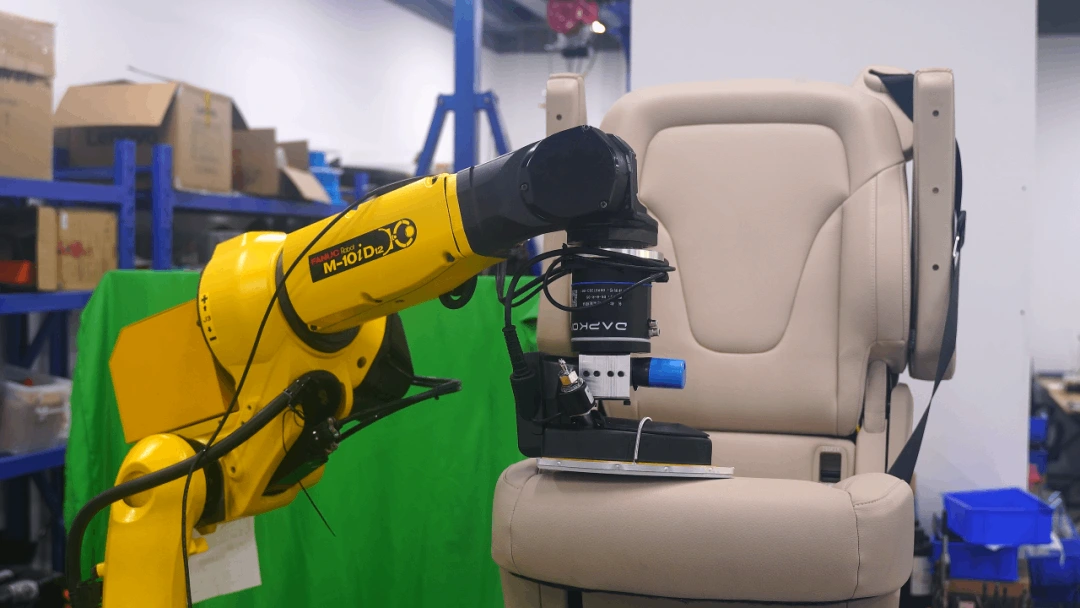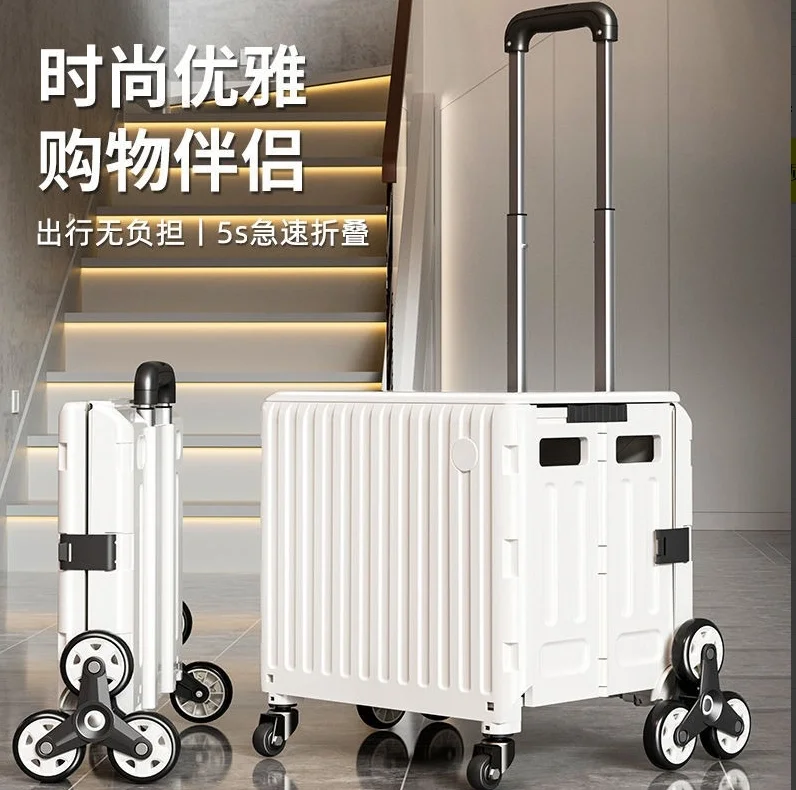Seat testing is a key link to ensure product quality and passenger comfort, and it is becoming increasingly important in modern automobile manufacturing. In order to ensure the consistency, durability and comfort of seats, seat manufacturers need to conduct durability tests, rigidity tests and functional operation tests on seats. These seat tests require the use of robot force control technology to achieve efficient and accurate detection of car seats.
Robotic seat testing is a process of automated testing of the quality, performance and safety of car seats using robot force control technology. Through high-precision force sensors, robotic arm systems and control systems, robots can accurately sense the position, shape and characteristics of seats, and perform efficient and accurate testing of various parts of seats.
Dapkon's robot force control seat testing solution provides an efficient, accurate and reliable means of quality control. Through the automated testing process, it can not only improve production efficiency and reduce human errors, but also provide strong support for the continuous improvement of seat quality. Dapkon's flexible force control system has been successfully implemented in many head seat manufacturers, helping them to automate, intelligentize and digitalize their seat testing process.
1. Different standards for seat testing
Seat testing mainly covers functional durability, comfort, strength and regulatory testing. Different standard systems have different requirements for test items, methods and limits, which are mainly divided into two categories: national and industry levels, and enterprise specifications. These standards and test items jointly construct the automotive seat testing system, provide a scientific basis for seat design, production, and quality control, and ensure that the seats meet the safety, comfort and durability requirements of automotive use.
The Dapkon force control system is equipped with an intelligent parameter management system, with built-in multiple sets of force control parameters and load identification parameter saving functions. Staff can flexibly adjust key parameters such as detection force and detection position according to actual needs, and can adapt to different types of seat detection tasks and multiple detection standards, industry general specifications and customer special requirements, and fully meet diversified detection needs.

2. Challenges of seat detection and limitations of traditional methods
As an important part of products such as automobiles and furniture, the quality of seats is directly related to the comfort and safety of users. In the process of seat production, detection work is crucial to discover potential manufacturing defects. Traditional seat detection methods rely mostly on manual operations, and common methods include visual inspection and manual measurement. However, these methods have some obvious limitations:
2.1 Low detection efficiency Manual detection takes a lot of time, especially for seats that need to be mass-produced. The time cost of manual detection is high, and the accuracy of detection is limited by the experience and skills of the operator.
2.2 Poor detection accuracy The accuracy of manual detection is limited by the experience and skills of the operator, and is easily affected by factors such as fatigue and emotions, resulting in instability of the detection results. 3. Difficult to achieve high-precision detection Some detection tasks (such as seat comfort testing, tightness of connecting parts, etc.) require precise force control and response, which is difficult to judge by the naked eye. Relying on subjective judgment may cause errors and cannot guarantee consistency and accuracy.
3. Advantages of robot force control seat detection
3.1 High precision and high repeatability Dapkon's robot force control system can accurately control and measure the force applied by the robot to meet the test needs of seat manufacturers for rigidity testing and durability testing. In the process of performing the inspection task, the robot force control system showed excellent repeatability and consistency, and was able to apply pressure accurately and evenly in strict accordance with the preset force value, effectively avoiding the errors caused by uneven force in manual inspection. In addition, the robot force control system is not affected by human factors such as fatigue and lack of concentration, which greatly improves the reliability of the inspection results.
3.2 Real-time data collection and traceability The Dapkon robot force control inspection system can collect inspection data in real time and intuitively display it to users through curves in the user interface to meet the manufacturer's needs for recording seat inspection data. In addition, the system records the process data in real time (ms level) in each servo cycle, fully guaranteeing the traceability, reproducibility and twinning of the process. This not only helps users to efficiently accumulate on-site process data, but also provides a solid and powerful basis for the continuous optimization of the process, and promotes the steady improvement of production efficiency and quality.
3.3 Simulation of real-world use scenarios Through Dapkon force control technology and customized tooling, the robot can accurately simulate the seat use behavior of the human body in various scenarios, covering details such as the pressure distribution of the human buttocks and back. The force control system can perform long-term in-and-out seat tests, highly restore the real usage scenarios, comprehensively evaluate the durability and reliability of the seats, and strictly adhere to the high degree of fit between the actual performance of the seats and the design requirements.
3.4 Improve detection efficiency Compared with traditional manual detection methods, the robot force control detection solution can significantly improve detection efficiency. The robot has the ability to work 24 hours a day and can significantly shorten the time required for simulated wear. This efficient detection capability enables companies to complete more detection tasks in a shorter time, speed up product launch, and improve market competitiveness.
3.5 Accurately adjustable sensitivity Dapkon's flexible force control software has the function of adjusting the force and setting the upper limit of the force, which not only improves the accuracy of the detection, but also enhances its adaptability. With the flexible adjustment of the force, manufacturers can quickly respond to changes in seat detection needs, optimize detection strategies in a timely manner, easily cope with various complex detection scenarios, and fully meet diverse detection requirements.
3.6 Reduce manual intervention The Dapkon robot force control detection solution is highly automated, which greatly reduces the need for manual intervention and effectively avoids various errors caused by improper manual operation, fatigue or negligence. The Dapkon force control system not only significantly improves the detection efficiency, ensures the rigor and stability of the detection process, but also greatly improves the consistency and reliability of the detection results.
3.7 Safe and reliable Force control technology can monitor and control the force between the robot and the seat in real time to ensure that the force applied during the test is always within the preset range. During the detection process, once the Dapkon force control system detects that the force exceeds the preset safety threshold, the force control system will immediately terminate the test process and issue an alarm in time to ensure safety.
3.8 Force, displacement, and time mixed programming Flexible adaptation to different detection needs The Dapkon force control system has strong adaptability and can meet customers' needs for seat detection of different types, sizes and materials. Staff can adjust the parameters such as the applied detection force and detection position as needed, flexibly adapt to the structure and characteristics of various seats, and realize personalized detection needs. Whether it is a car seat, office seat or aviation seat, robot force control detection can provide accurate and effective solutions.
The Dapkon force control system can test a variety of items, covering rigidity, durability, comfort and functional operation. Rigidity test includes cushion strength test, backrest strength test, armrest strength test and other test contents. Durability test includes simulation of human in and out durability, backrest folding durability, armrest folding durability, cup holder folding durability, headrest adjustment durability and other test contents. Comfort test includes dynamic comfort test, pressure distribution test, point load test, seat massage force test and other test contents. Functional operation test includes seat adjustment force, switch operation force, headrest unlocking force, headrest pull-out force, backrest unlocking force and other test contents.
The Dapkon force control system has brought significant improvements to seat detection with its advantages of high precision, high reliability, multi-functional integration, efficient data processing and real scene simulation. From the perspective of user experience, the solution is easy to operate, reduces manual intervention, improves detection efficiency, and ultimately improves product quality and safety. Actual application cases have also proved the remarkable effect of this solution in improving production efficiency, reducing costs and optimizing product quality.
With the continuous development of technology, the robot force control detection solution will play an increasingly important role in future seat detection, bringing more innovation and value to the automotive manufacturing industry, helping users stand out in the fiercely competitive market and win more market share.
www.dapkon.ai
Shanghai Dapkon Technology Co., Ltd.


